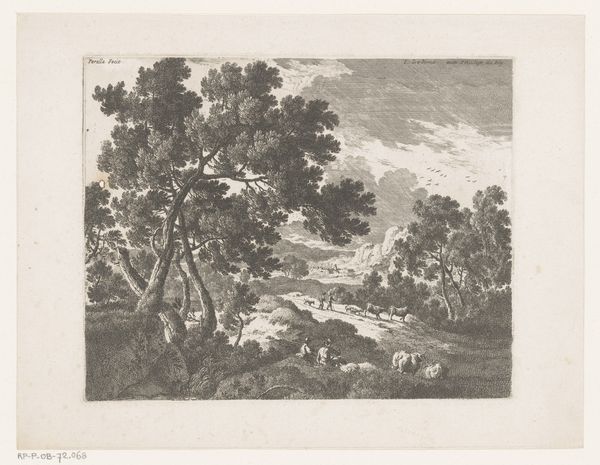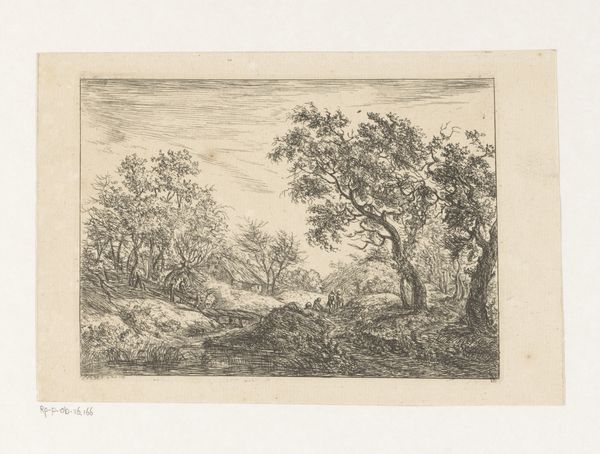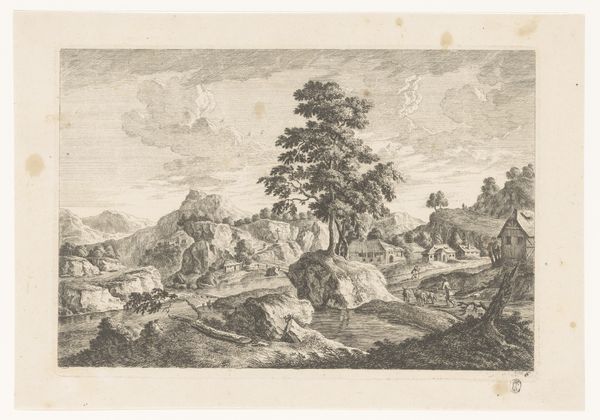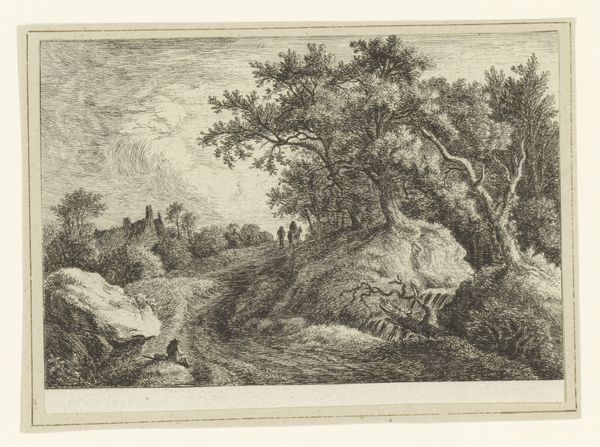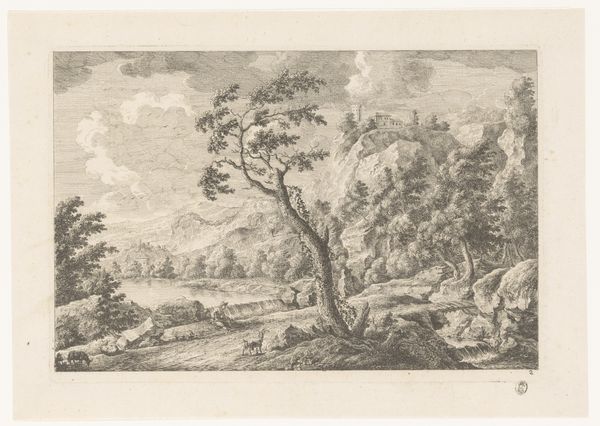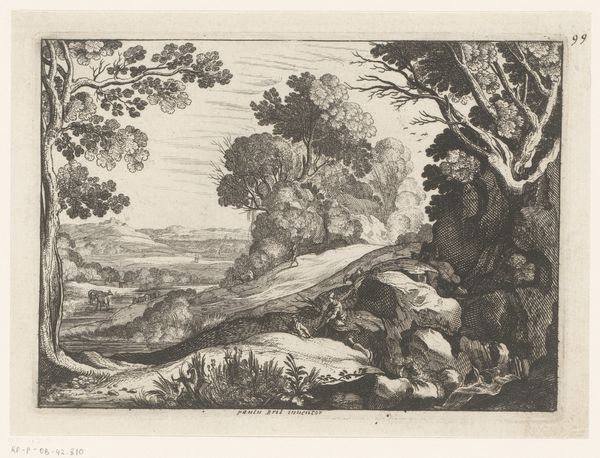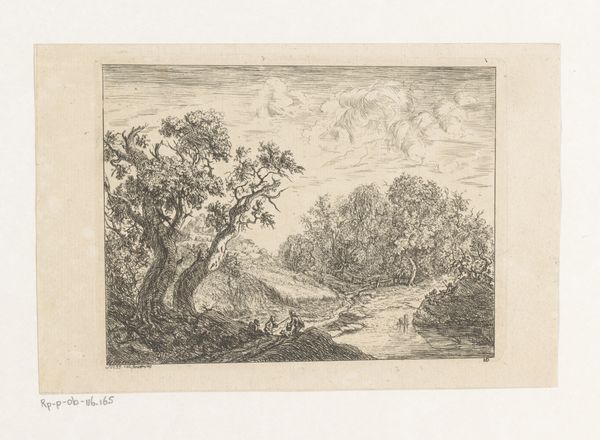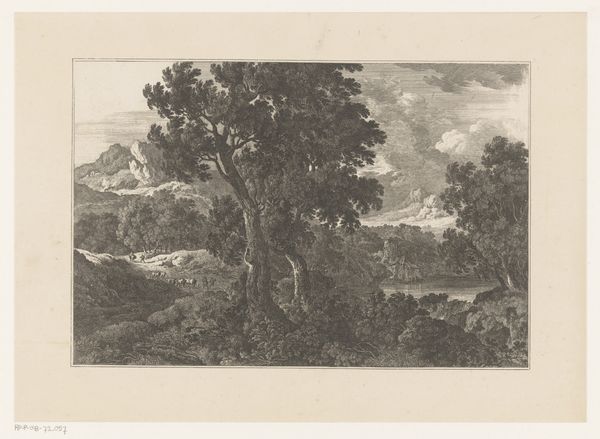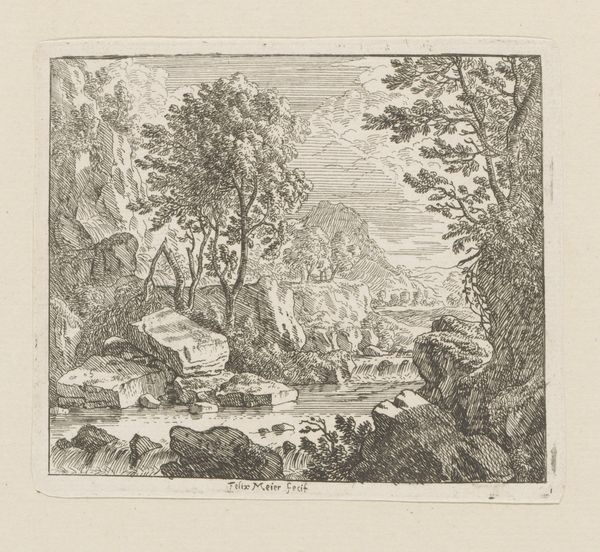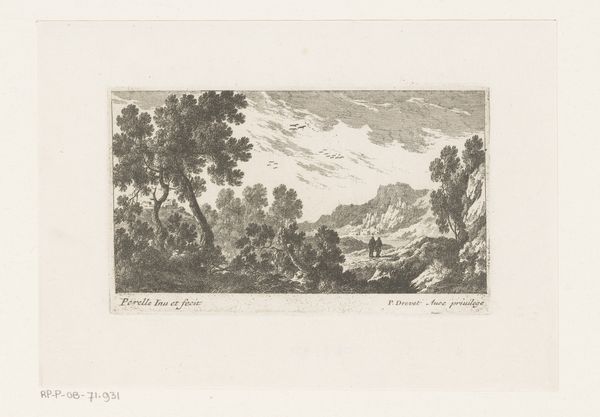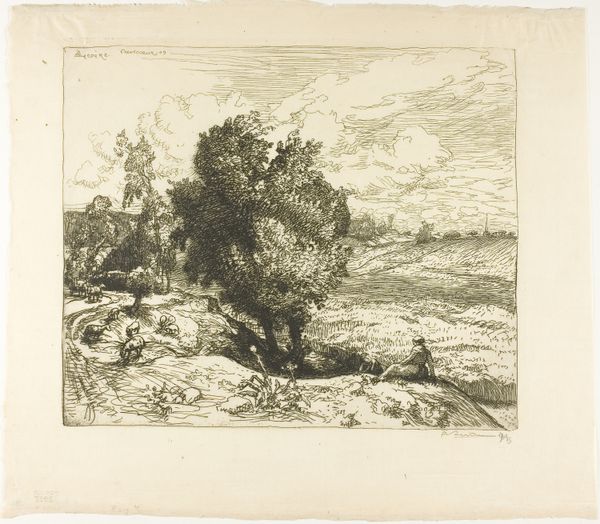
etching, engraving
#
etching
#
landscape
#
etching
#
engraving
#
realism
Dimensions: height 101 mm, width 135 mm
Copyright: Rijks Museum: Open Domain
Curator: Here we have Jacob Philipp Hackert’s, "Coastal Landscape with Tree," an etching and engraving from the late 18th to early 19th century. Editor: It's delicate, isn't it? The wispy lines create a sense of spaciousness, almost fragility. That lone tree feels quite dramatic. Curator: Hackert was quite the traveler, commissioned by European royalty. His landscapes were sought after, shaping how the elite viewed—and consumed—the natural world. The Rijksmuseum is fortunate to have this print, which showcases his refined skill. Editor: The texture he achieves is interesting. The way he builds up those tiny marks to suggest rock, foliage, and even atmospheric haze... it must have been incredibly time-consuming work, demanding high levels of artisanship. One can almost feel the labour invested in the production of this image. Curator: And notice how that solitary tree dominates the composition. It's not just a picturesque element, it becomes symbolic, perhaps representing resilience. He cleverly includes those strolling figures in the foreground, seemingly dwarfed by the landscape itself, giving scale to this vista and playing into notions of the sublime. Editor: That's where the political agenda comes in too, doesn't it? The grand tour aesthetic for aristocrats! They purchased these images, claiming these lands. These works are also objects within that culture of acquisition. I also wonder about the types of acids, paper, tools and so on he uses to arrive at these fine lines? Curator: Precisely. Art, then as now, was bound up in power. Looking closely allows us to better understand how artists of the day played this system to their benefit by also imbuing landscapes with loaded and politically imbued values. Editor: Indeed. To analyze the processes is also to think of materials within these political arenas of control. So, a coastal view can be seen to speak about so much! Curator: Looking at it through this light definitely alters how it speaks. Thank you. Editor: And thank you! I always see so much looking carefully at the materiality.
Comments
No comments
Be the first to comment and join the conversation on the ultimate creative platform.
